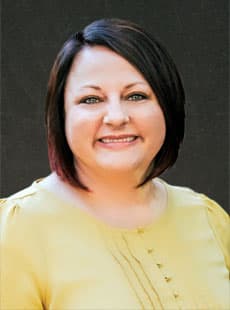Discussing DC Riots with Students
Robert Austin, USBE Humanities Team Coordinator has compiled resources to help your students understand the events in DC and what will come with the transition of power.
The civic mission of public education, and the imperative for developing civic skills provide a strong case for responding to the events in Washington with thoughtful and appropriate classroom instruction.
First, it is important to remind students that the rule of law and the institutions of this Republic endure in the face of this assault. This short speech from Senate Majority Leader Mitch McConnell says as much.
It is also important to pay attention to the social and emotional needs of students.
- Please remember Maslow’s Hierarchy of Needs. Right after the physiological needs (food, water, rest) are the needs of security and safety. Our students’ sense of security and safety are already stressed due to the pandemic. It is critical that we remember to focus on these needs in age-appropriate ways. For some, this may mean putting aside some of the day’s instructional plans to provide a space to discuss and process this very teachable moment. For others, particularly for younger students, we can best address their needs for security and safety by giving them the familiarity of routine, responding to naturally occurring questions with reassurance that the institutions enshrined in the U.S. Constitution remain in place.
- We’ve seen time and again, through crises both national and local, that students take cues from us. Our behaviors and reactions can be the mirror our students use to see themselves. Be calm, be steady, and reassure our students that they can talk through any and all problems to feel safe and healthy.
- Classrooms are where we model civil discourse and the process of democracy. You are no doubt aware that our students bring to our schools a variety of beliefs. As you engage with students in conversation, being respectful of opinions but steering back to facts is key.
Here are some additional resources and ideas that may be of use.
You may want to use these talking points for general discussion or facilitation of feelings or worries. If you feel it inappropriate to engage in conversations about what happened due to the age of your students, please feel free to carry on in your classroom as you see fit. If you need more direction for speaking with your students, please use the following talking points to guide your conversation:
For younger learners, language such as:
- The rules of our country were not followed...this is not the way a peaceful transfer of power is supposed to happen in our country after an election of a president.
- When we have problems at school or at home, we are supposed to talk through these problems instead of using violence. Fighting and arguing does not make the problems go away, it just makes problems bigger.
- Sometimes we disagree with each other. It’s okay to have our own thoughts and ideas. We do not have to all believe the same things. What we all need to do is be respectful of each other and sometimes agree to disagree.
- We all live in America and even when we do not agree with each other, we are Americans and it’s important to stick together, help each other when we can, be good neighbors, and respect our rules and laws that help all people in our country.
- How can we have civil conversations about topics when we don’t agree?
- Protesting peacefully is every American’s right, but the actions that took place were not peaceful and escalated beyond protesting to illegal activity.
- No matter what your political opinions are, we all are Americans and have many common values and beliefs.
General Post-Election Resources for Classrooms
-
Every Teacher is a Civics Teacher- Civics Across the Curriculum Series
The Democracy Schools Network is hosting a webinar series centered on the various elements of Democracy Schools. This series' theme is “Every Teacher is a Civics Teacher: Best Practices for Civic Learning and Organizational Supports.” Sessions will occur from 3-4 p.m. (Mountain time) on the first and third Thursdays of the month from January until April 2021. - Mary Ellen Daneels
She has a blog post with a range of educational resources that may be of use as we move through this transition process. She has also written extensively on the ways teachers can help classrooms process the 2020 election, and has a range of resources that may be useful for creating safe spaces and conversations for both elementary and secondary classrooms. - C-SPAN Classroom Resources
C-SPAN has been a reliable and free resource regarding lesson ideas and video resources, and there will be a number of very important speeches and moments. - Bringing People Together: The Better Arguments Project
A national civic initiative created to help bridge divides between students and the community—not by papering over different viewpoints, but by helping the school community and students have “Better Arguments” that bring them together than driving them apart.
The Better Arguments Project collaborates with the Aspen Institute Citizenship and American Identity Program, Facing History and Ourselves, and The Allstate Corporation. Designed in partnership with communities and advisers around the country, the project synthesizes three dimensions (historical context, emotional intelligence, recognizing power) and five principles of a Better Argument (take winning off the table, prioritize relationships and listen passionately, pay attention to context, embrace vulnerability, and make room to transform).
Educators and school leaders can bring Better Arguments to their students using the free Better Arguments school curriculum and student workbook to produce good work. The organization also provides a free brainstorming guide to help educators consider how Better Arguments can apply to their community, along with best practices for facilitation. - How do you talk to your children about scary news events?
Encourage your kids to share what they already know, let them ask questions, and offer simple, age-appropriate, information. - When something scary happens
When something difficult or unexpected happens, kids may experience many different feelings. Here are emergency kits, video clips and activities to help families cope in challenging times. - PBS NewsHour Extra – teaching resources


 UTAH EDUCATION NETWORK
UTAH EDUCATION NETWORK

 Justin
Justin Braxton
Braxton Dani
Dani Kayla
Kayla Katie
Katie Lora
Lora Rob
Rob Val
Val
